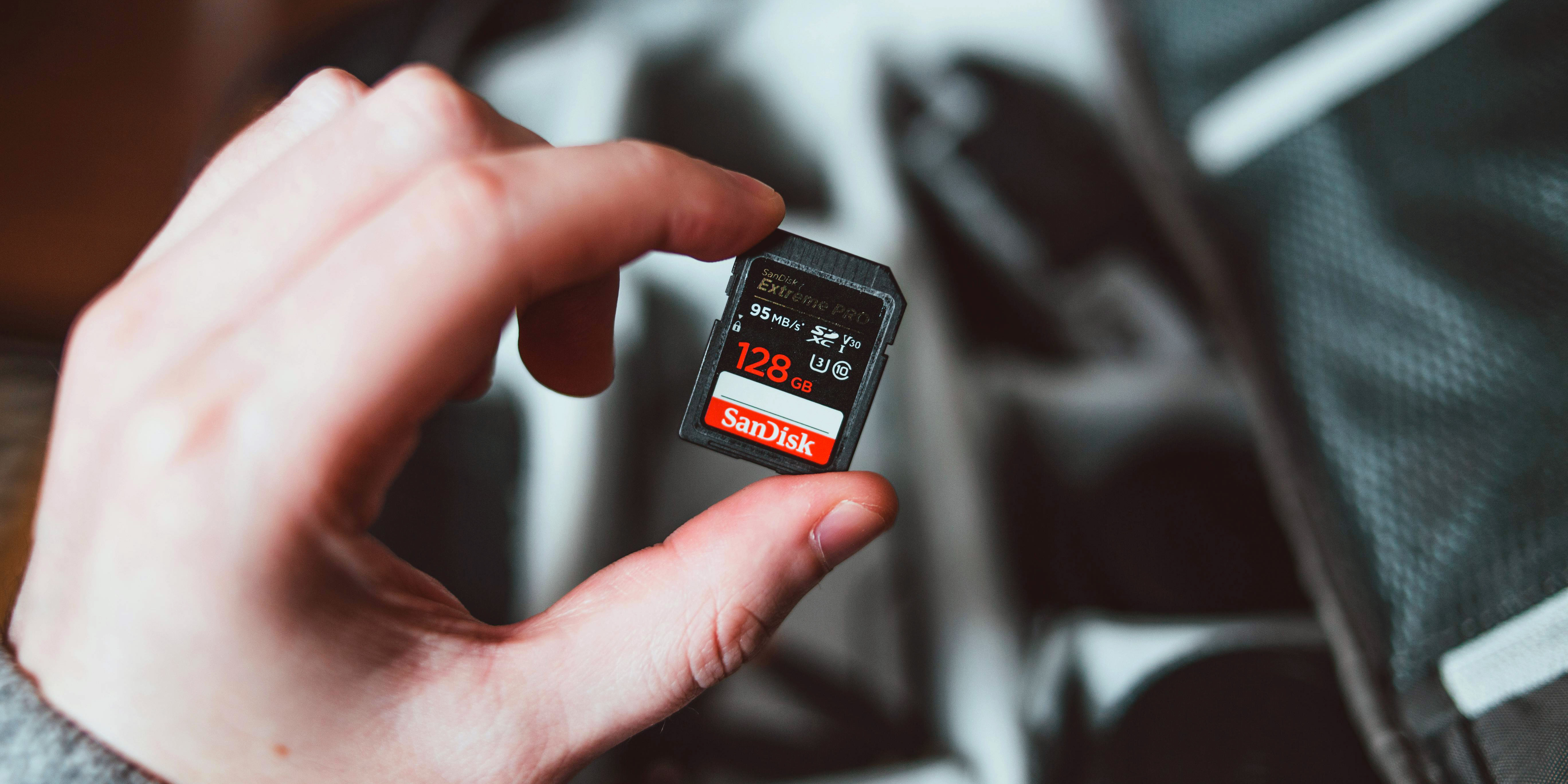A robust file management and backup routine is essential for photographers to safeguard their valuable images and ensure an efficient workflow. While editing your photos right off the SD card might save you a few seconds of importing, it is a surefire way to lose footage and photos. Accidental deletions, data overwrites, and card failures happen far more often than we would like to admit. That being said, here are a few tips to mitigate future mishaps!

Import, Copy & Re-Format:
After returning from a photoshoot, we recommend immediately removing the used memory cards from your camera or card case and copying the new files to another location (your computer’s hard drive, external drive, cloud storage, etc…). Once the files have been copied, immediately place the memory card back into the camera and format it so it is empty and ready for use on your next shoot.

The 3-2-1 Rule:
Now that your photos and video files have been successfully transferred to a computer, we recommend adopting the 3-2-1 Rule for every shot you plan on using. The Rule is 3 copies, 2 on different drives with 1 spare, off-site. Let’s break it down.
By placing each of the three copies of your best shots in different locations, you’re covering your bases- if one of your hard drives fails, then you’ve at least got duplicates. This is where the two different drives come in; storing multiple copies of your photos on separate drives mitigates the chance of completely losing an entire project due to one hard drive failing.
Finally, by having a just-in-case-doomsday-comes-to-town copy of your work stored in the cloud, you and your files will be completely safe from an unexpected disaster such as a fire or theft of your computer.

Folder Structure:
Depending on your workload as a photographer, you may need a little more organization on your hard drive. Everyone will have their preferred way to organize their files and folders, and there is no single right answer. That being said, here are some tips to get your file structure started:
- Organize and rename your different drives for their various functions. In our case, our social media specialist Spencer has his external drives marked as Scratch Drive (for current project media), Archive Drive (for completed projects and photo backups), Backups (for TimeMachine backups and extra copies of important files), and SSD (for Final Cut Libraries and often-accessed filmmaking assets).
- Create folders for each year within each drive. In Spencer’s case, he has duplicate folders for each year- one for personal use and one for his freelance business.
- Beyond this point, you’ll need to develop your own way of keeping your files organized. For example, within each year’s folder for Spencer’s personal photos, he breaks things down by month or by particular events. In the folders for his business, however, he has individual folders for each project, all containing a few more layers of folders to keep footage, photos, music, and VFX elements organized.
- Find a file storage and organization system that best suits your needs as a creative and get into the habit of routinely backing up and organizing your files!
In the Event of a Catastrophe:
It happens. Maybe you mistakenly formatted a memory card before copying your files. Maybe the card was removed from the computer without being ejected. Maybe the card simply failed, leaving you to question all of your life choices up until this point…
Fear not! McBain has got your back!
We offer digital media data recovery services with a stellar rate of success. That said, we cannot guarantee that all recoveries will work and will only charge you if we successfully recover any data.
Bring your affected media card to any of our locations so we can work our magic for you!
Visit our Digital Services page to learn more!

Wrapping Up
In conclusion, maintaining a robust file management and backup routine is not just good practice for photographers—it’s essential. From the moment you finish a shoot, the steps you take to import, copy, and back up your files can make the difference between safeguarding your valuable work and potentially losing it forever. You significantly reduce the risk of data loss by adhering to practices such as immediately copying and formatting your memory cards, following the 3-2-1 Rule, and establishing an organized folder structure.
While accidents and unexpected mishaps can still occur, a solid backup strategy will minimize their impact. In the unfortunate event of data loss, professional recovery services like ours can provide a safety net. Remember, the key to a smooth and efficient workflow lies in consistently backing up and organizing your files. Doing so ensures that your creative work is protected and accessible, allowing you to focus on what you do best—capturing stunning images.